A Cold Soaking Guide for Stoveless Backpackers
By Aaron Owens Mayhew, MS, RDN, CD
Updated January 11, 2024
This post may contain affiliate links.
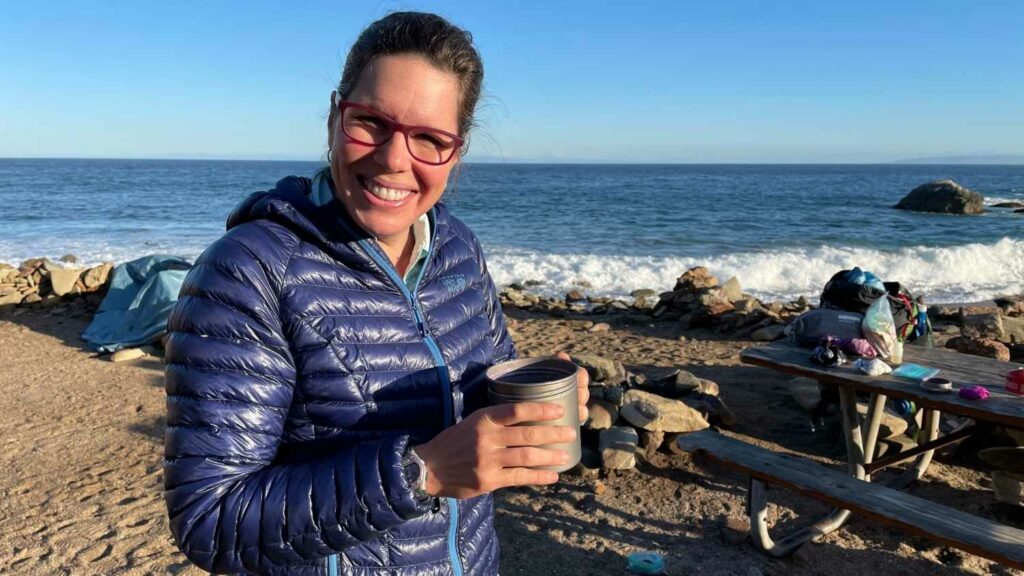
Find out if cold soaking is right for you and how to get started!
Have you heard of other backpackers going stoveless in favor of cold soaking? You may think of these hikers as rugged outdoors people, willing to forgo the creature comfort of hot meals in the backcountry. However, many people don’t realize they already use cold soak recipes for some of their meals.
Maybe you . . .
- have thought about cold soaking but aren’t sure if it is right for you
- want to get started cold soaking but aren’t sure what foods work best cold
- are not even sure what cold soaking is, but want to know what all the fuss is about
If any of these describe you, read on! We’ll help you determine if cold soaking is right for you and how to get started.

What is cold soaking?
First off, what does cold soaking even mean? Cold soaking is a no-cook food preparation method where dehydrated foods are soaked in cold water until rehydrated. You may balk at the idea of preparing meals this way, but many hikers swear by it.
Benefits of cold soaking
Are there any benefits to eating cold food? Yes, there are! And for many backpackers, the benefits far outweigh the joys of a hot meal. Here are a few:
✔ Lighter gear
Leaving your stove and fuel at home can cut your pack weight by over a pound (depending on which stove you usually use).
✔ No calculating fuel needs or wondering if it will run out
Along with the benefit of a lighter pack, you can hike with a lighter mind. No worrying if you’ll have enough fuel to cook your dinner tonight. No guessing or having to calculate how much you might need.
✔ Less time spent cooking
The just-add-water-and-soak approach might be a perfect solution if you get sick of cooking. Cold soak recipes allow you to get back to hiking sooner after breakfast and lunch since you don’t have to dig out your fuel, wait for the water to boil, etc.
✔ Safety in fire ban areas
Although backpacking stoves are relatively safe compared to other potential fire starters, you can’t be too careful in dry areas!
✔ Safety in areas with high bear activity
Bears and other wild animals are especially attracted by cooking smells. Hot foods tend to give off more odors than cold ones do. Cold soaking can help to keep those critters away from your camp.
Disadvantages of cold soaking
The downsides to cold soaking are few – you must eat cold meals and think ahead to have your meals ready by the time you want to eat. But if you’re hiking in a hot area, don’t care much about hot food, or are a natural planner, these might not be disadvantages at all.
Not all recipes will indeed work cold-soaked. If you’ve tried it before and had a less-than-optimal experience, you’re not alone! But consider the possibility that you haven’t found the right recipes yet. You could learn to enjoy cold soaking with a little trial and error.

How to get started with cold soaking
Despite its benefits, cold soaking is not for everyone. If you are still unsure whether cold soaking could work for you, why not test it? Try preparing a few cold soak recipes at home or on a shorter trip. You could also just cold soak breakfasts and lunches and bring along the stove to make hot dinners. If you’re ready to start experimenting, here are all the tips and tricks you will need.
Which containers work best for cold soaking?
The best containers for cold soaking are leakproof. These allow you to store hydrating meals in your pack while you hike. They should also have enough volume to allow your meal to expand while rehydrating. This is a key point to remember!
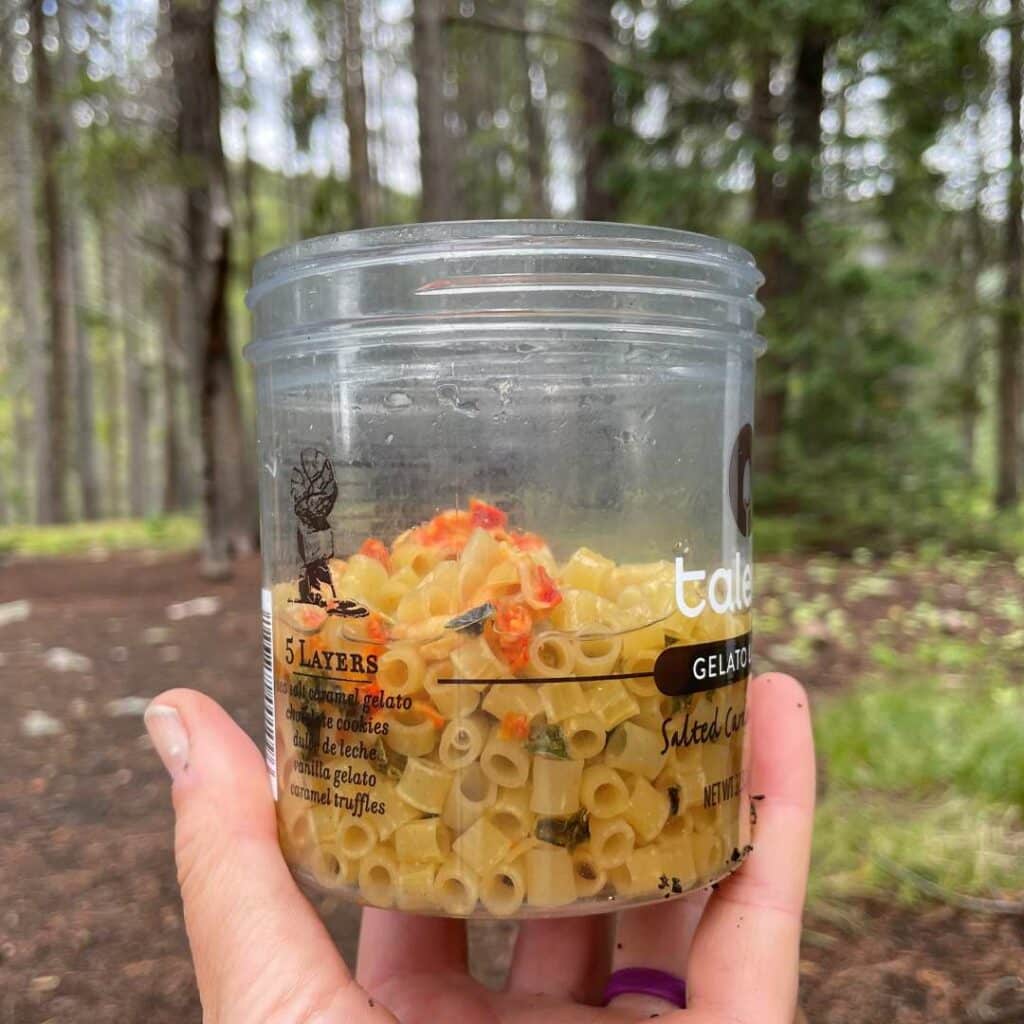


As you can see in the images above, stirring the meal can get messy if sufficient room isn’t left in the jar after rehydrating the meal. We recommend practicing at home with new meals or pacing an extra bowl if the jar is not large enough. This is our cold soak Buffalo Pasta Salad recipe if you’re curious.
There are many durable, inexpensive, and lightweight options:
Peanut Butter Jar
Weight: ~2oz, depending on the brand
Volume: ~750ml, depending on the brand
Cost: $2.50 – $6, depending on the brand
Benefits:
- Environmentally friendly (you’re reusing a container)
- Slightly easier than other containers for drinking beverages
Talenti Jar
Weight: 1.9 oz
Volume: 473 mL
Cost: $5.00
Benefits:
- Environmentally friendly
- Wider opening compared to a peanut butter jar
- It’s a great excuse for eating gelato!
Ziplock Twist n’ Loc
Weight: 1 oz
Volume: 437 mL
Cost: $3.00 for a pack of 3
Benefits:
- Wide opening
- Inexpensive
Vargo Bot Titanium Pot
Weight: 4.8 oz
Volume: 700 mL
Cost: $99.95
Benefits:
- Use it as a cooking pot and a cold soaking jar if you only want to cold soak some of your meals.
PRO TIPS: Choose containers that do not have ridges in the bottom of the jar. The ridges make cleaning the jar more difficult. Also, make sure that your hand fits in the jar so that you can easily reach the bottom to clean it thoroughly.

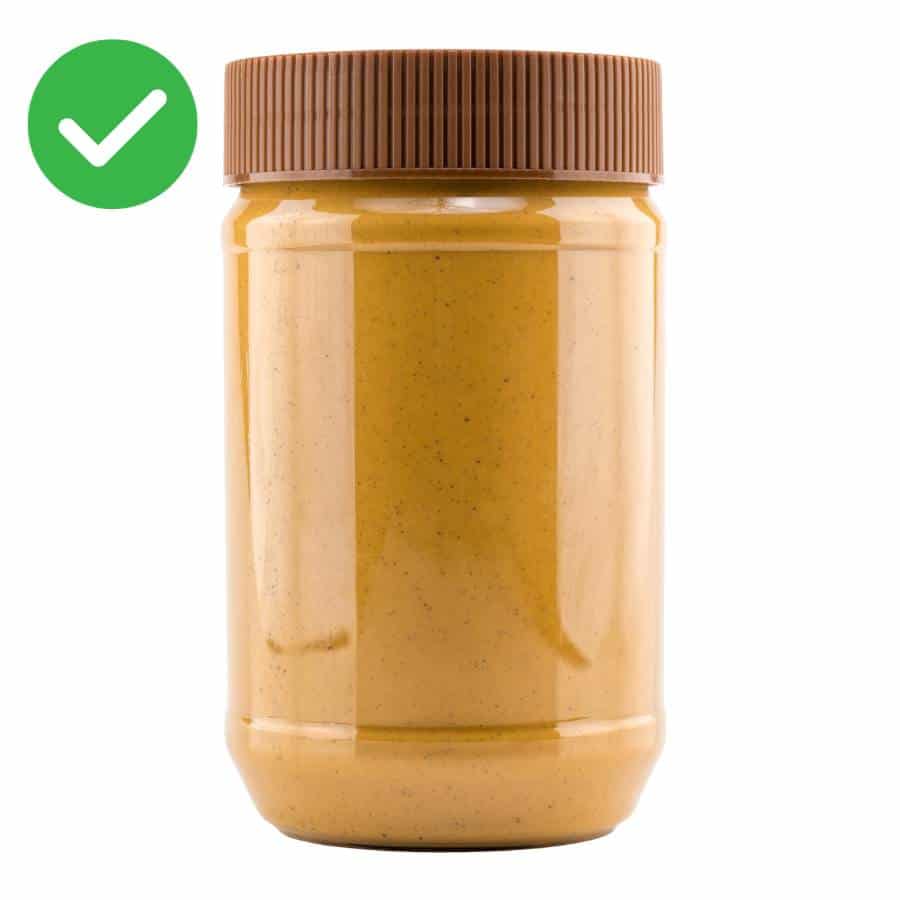
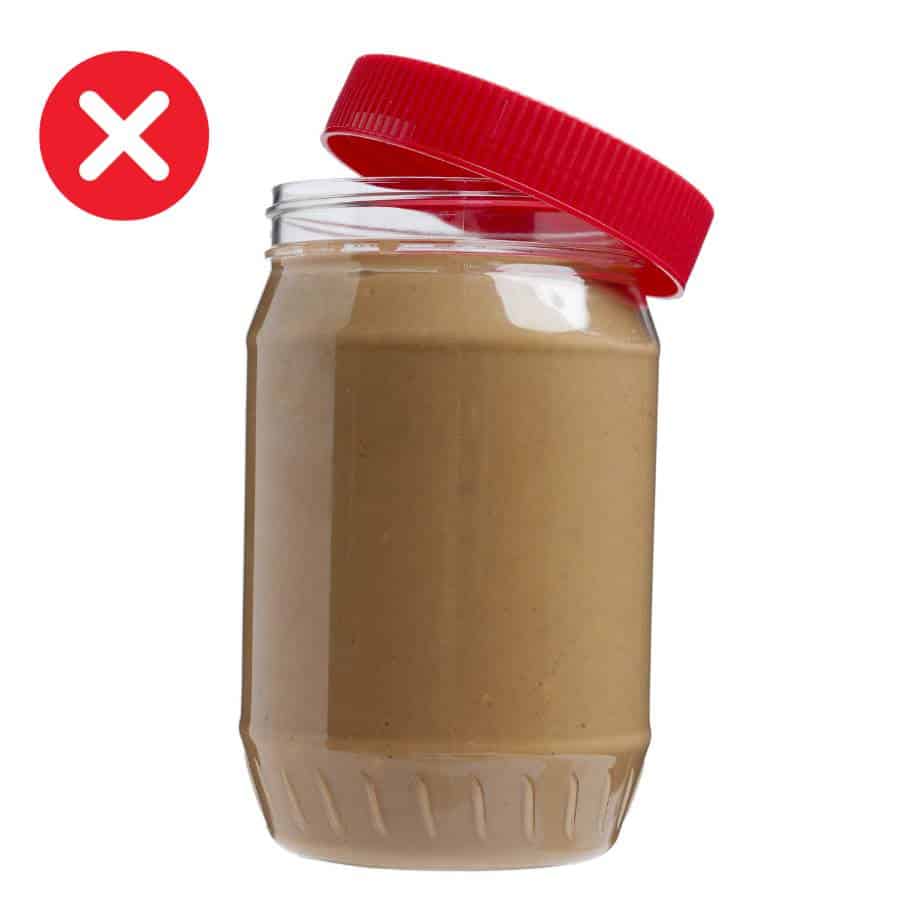
Which foods work best for cold soaking?
There are many backpacking foods and ingredients that work well with cold soaking. These include the following with approximate recommended soaking time.
Recommended rehydration times
| Food | Soaking Time |
| Ramen noodles | 20-30 minutes |
| Rice ramen noodles | 1-2 hours |
| Couscous | 5-10 minutes |
| Pre-cooked, dehydrated pasta | 1-2 hours |
| Instant mashed potatoes | Instant |
| Hummus mix | Instant |
| Dehydrated refried beans | 5-20 minutes |
| Milk powder | Instant |
| Breakfast shake powder, instant coffee, and other drink mixes | Instant |
| Freeze-dried vegetables | 5-20 minutes |
| Most dehydrated vegetables | 10-30 minutes |
| Textured vegetable protein (TVP) | 5-20 minutes |
| Dehydrated beans | 2 hours |
| Instant pudding | 15 minutes |
| Chia seeds | 15 minutes |
| Oats | 30-60 minutes |
| Instant quinoa | 30-60 minutes |
| Dehydrated garbanzo beans (chickpeas) | 90-120 minutes |
Tips for cold soaking
| Food | Tips |
| Ramen noodles | Breaking up the noodles will speed up the rehydration process |
| Rice ramen noodles | Breaking up the noodles will speed up the rehydration process |
| Pre-cooked, dehydrated pasta | Small shapes will rehydrate faster |
| Instant mashed potatoes | Stir really well |
| Hummus mix | Stir really well and add olive oil for more calories |
| Dehydrated refried beans | Break into small chunks or powder using a coffee grinder for best rehydrating |
| Milk powder | To avoid clumps, add a little water first and stir to form a paste before adding the remaining water. |
| Breakfast shake powder, instant coffee, and other drink mixes | Shake really well |
| Dehydrated beans | Make your own by dehydrating bulk or canned beans or purchase online |
| Instant pudding | Set the container in a cold river or lake or snow to speed up the thickening process |
| Oats | |
| Instant quinoa | Cook & dehydrate your own or purchase online |
If your dish has a combination of these ingredients, let foods soak for the maximum soak times that will rehydrate all the ingredients. For most foods, you don’t have to worry about overhydrating ingredients.
However, if you are soaking something that combines instant ingredients and ingredients that require prolonged soaking, you may have to rehydrate your meal in stages. For example, you can rehydrate jerky and veggies for an hour to fully hydrate, then add more water and instant mashed potatoes for a backcountry version of shepherd’s pie.
Check out these recipes from the Backcountry Foodie that work well for cold soaking.
Which foods don’t work well for cold soaking?
✖ Pasta and rice noodles (that have NOT been pre-cooked and dehydrated)
Pasta can only be cold soaked when it is pre-cooked and then dehydrated. Regular pasta may soften slightly after a few hours of cold soaking, but it will never fully reach a perfect al dente texture. This includes the pasta used in boxes of mac & cheese. The same is true for rice noodles (except for rice ramen, which is par-cooked). After 2 hours, rice noodles will soften slightly but mostly remain crunchy. Online retailers, such as Outdoor Herbivore, sell pre-cooked and dehydrated pasta if you cannot dehydrate your own.
✖ Some dehydrated veggies (including peas, corn, and mushrooms)
Most dehydrated vegetables cold soak well, with some exceptions. Dehydrated peas, corn, and mushrooms often give hikers trouble when cold soaked. They soften but remain chewy with tough centers. Freeze-dried versions of these veggies work better in cold soaking recipes but can take about an hour to rehydrate.
✖ Coconut milk powder
Coconut milk powder tends to not mix well with cold water. It will stay clumpy.
✖ Meats
You can cold soak freeze-dried meats, but the flavor is not popular. Dehydrated meats like jerky will only partially rehydrate. They may soften after 2-3 hours but will still be chewy. Food safety becomes a concern when foods hydrate for over 2 hours at a temperature above 40°F (just 1 hour if it’s 90°F or above). If you need to soak your meat longer than this to make it palatable, we’d recommend not taking the risk.
All things considered, we prefer going vegetarian for cold soak meals. Feel free to experiment – you might discover a strange liking for cold, partially-hydrated meats! Just keep food safety in mind. See our favorite cold soaking tips and tricks for more food safety considerations.
What about cold soaking commercial backpacking meals?
Most commercial backpacking meals, such as those from Mountain House and Backpacker’s Pantry, should not be cold soaked. They are designed to be rehydrated with boiling water, and most of these meals contain rice or pasta that can’t be rehydrated fully in cold water. Don’t spoil an expensive backpacking meal with a failed experiment. Save them for trips with a stove.
However, some pre-made backpacking foods do work fine or are even designed to be rehydrated in cold water. These include instant guacamole mixes, instant hummus mixes, and instant smoothie mixes.
Some backpacking meal companies also make meals designed to be hydrated in cold water. These are often for cold vegetable slaws and wrap fillings. Check the package for cold preparation instructions to see if your backpacking meal can be prepared cold.
Here are a few Backcountry Foodie cold soak meals available in our shop:
How to cold soak – tips and tricks
✔ Add the right amount of water
The amount of water needed to rehydrate foods varies and (to some degree) depends on personal preference. Add too little, and the food remains crunchy. Add too much, and you’ll be eating soup. But it is always easier to add more water than to take it out later.
For foods that rehydrate instantly, such as instant mashed potatoes, instant hummus, or guacamole mixes, add a little water at first, stirring frequently. Keep adding water until the food reaches your desired consistency.
For foods that need to soak a while to rehydrate (more than 5 minutes), a good rule of thumb is to add enough water to your container to completely cover the food. Break apart large pieces of food, such as blocks of ramen, into smaller pieces to cover it completely in less water. Check it after half the predicted soaking time and add extra water if needed. Starchy items like rice and noodles act like sponges and may need a little extra water to rehydrate.
✔ Discard excess water
After preparing your meal, if there is excess water in your container, make sure to dispose of it using proper Leave No Trace (LNT) principles. The best and least impactful on the environment is to drink the extra broth (consider it the first course!) Or you can dispose of it in a cat hole at least 6 inches deep and away from a water source or camp.
✔ Make it delicious
Just because you are eating cold food does not mean you have to sacrifice flavor. Consider jazzing up your cold soaked meal by adding additional sauces, condiments, spices, or even a tuna or chicken packet.
✔ Keep it safe
Food safety with cold soak backpacking meals is tricky for three reasons –
1. You don’t have access to refrigeration.
2. You don’t have heat to kill any potential bacteria that have contaminated your food.
3. When going stoveless, don’t let foods soak too long. Soaking for over 2 hours could increase your risk of getting sick. That means that if you can’t finish lunch, don’t save it for later.
PRO TIP: When preparing meals with milk or cheese powder, add the milk powder at the end after the other ingredients have rehydrated. The powder will rehydrate instantly. Use hydrated milk powder within 2 hours or 1 hour if it's 90°F or above.
Cold soak recipes to get you started.
READY TO SEE MORE ULTRALIGHT BACKPACKING RECIPES LIKE THESE?
Backcountry Foodie is your go-to resource for over 200 backpacking dietitian-created recipes and an automated meal planning tool. Meal prep has never been easier!

Running short on time to prepare cold soak backpacking meals?
Our backpacking food shop is your one-stop-shop solution for fueling your adventures.
DISCLOSURE: Some of the links on this page are affiliate links, which means we may receive a modest commission if purchases are made through those links. This adds no cost to our readers and helps us keep our site running. Our reputation is our most important asset, so we only include links for products we use ourselves.
Did you enjoy this post?
Pin it and share it with fellow hikers.
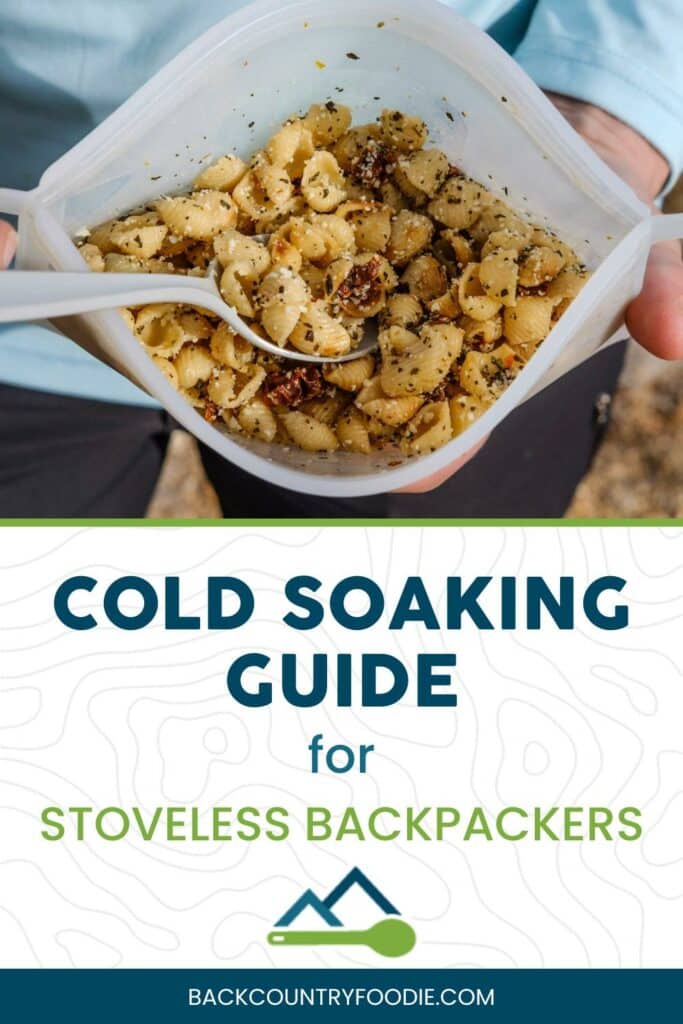
NEW TO OUR BLOG?
Here are more posts that you might find interesting…
- Backpacking Water Purification: Beyond Filters
- Backpacking Nutrition: Using the Goldilocks Approach
- Backpackers are athletes, too!
- How to Eat for Backpacking in Extreme Conditions
- Backpacking Meal Plans: Not all are created equal
- Should Backpackers Be Wary of Ramen Noodles?
ABOUT THE AUTHOR:
Aaron Owens Mayhew, MS, RDN, CD, is a registered dietitian and ultralight long-distance backpacker with over 20 years of nutrition and backpacking experience. She’s also the founder and owner of Backcountry Foodie, an online ultralight recipes and meal planning platform for backpackers. She also enjoys teaching hikers about backpacking nutrition via virtual masterclasses, YouTube videos, and podcast episodes. You can follow Aaron’s adventures in the kitchen and the backcountry via Instagram and Facebook.


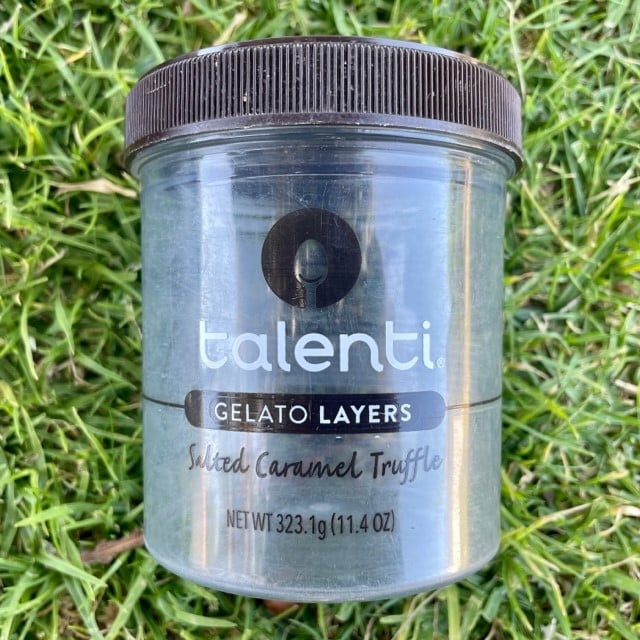


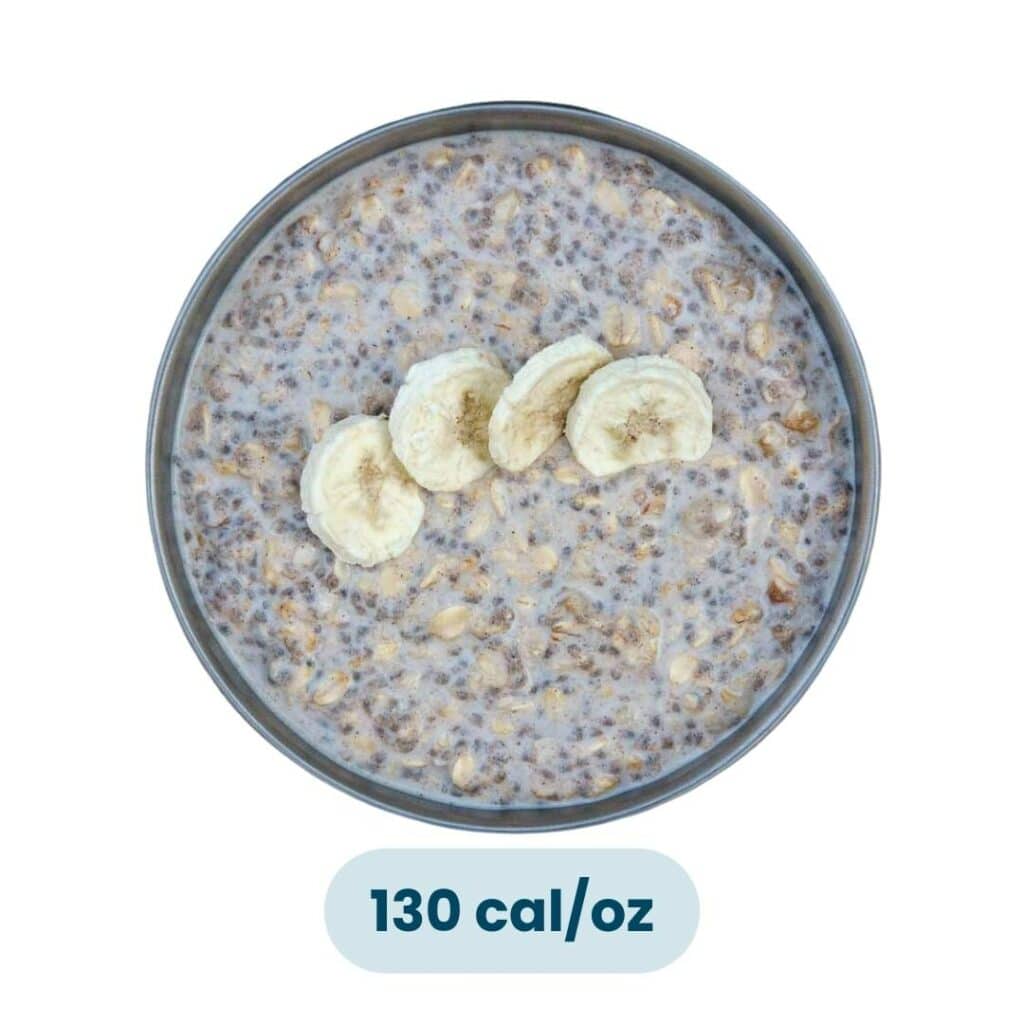
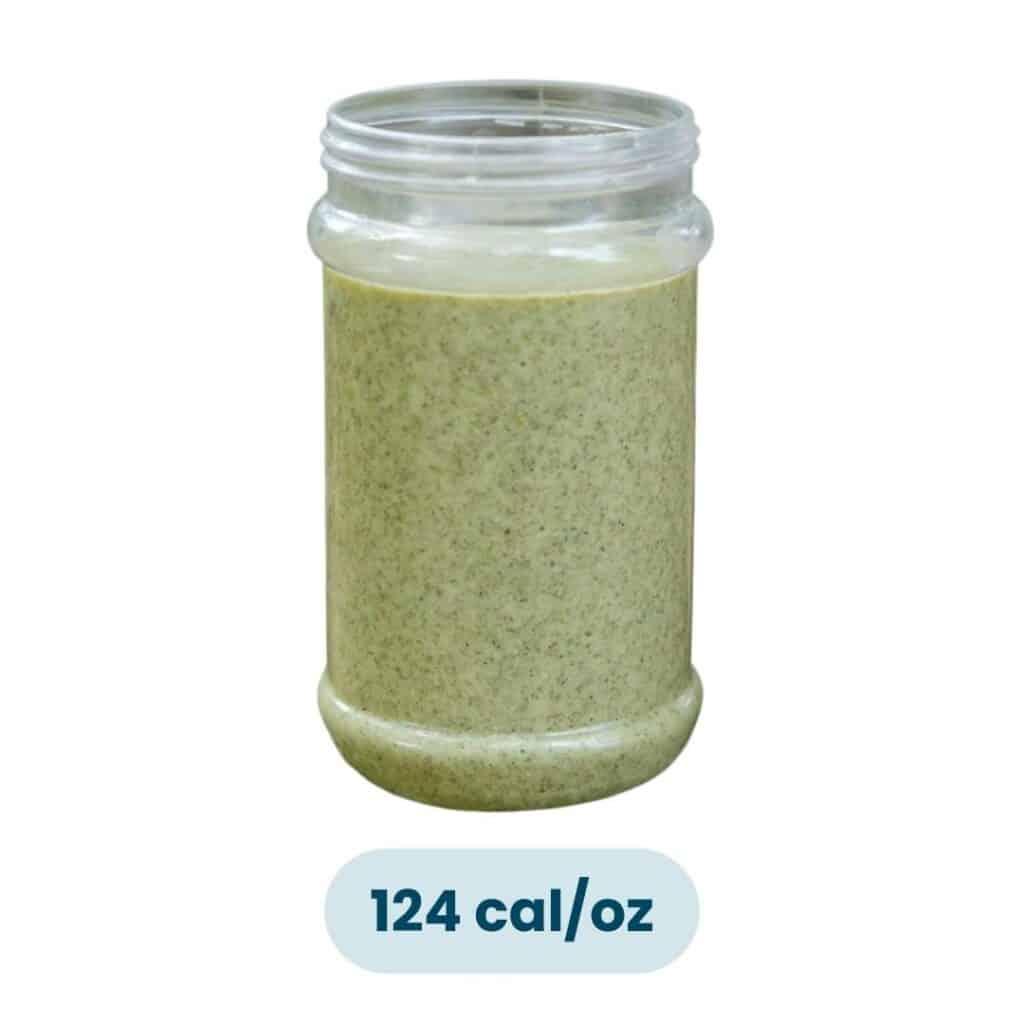
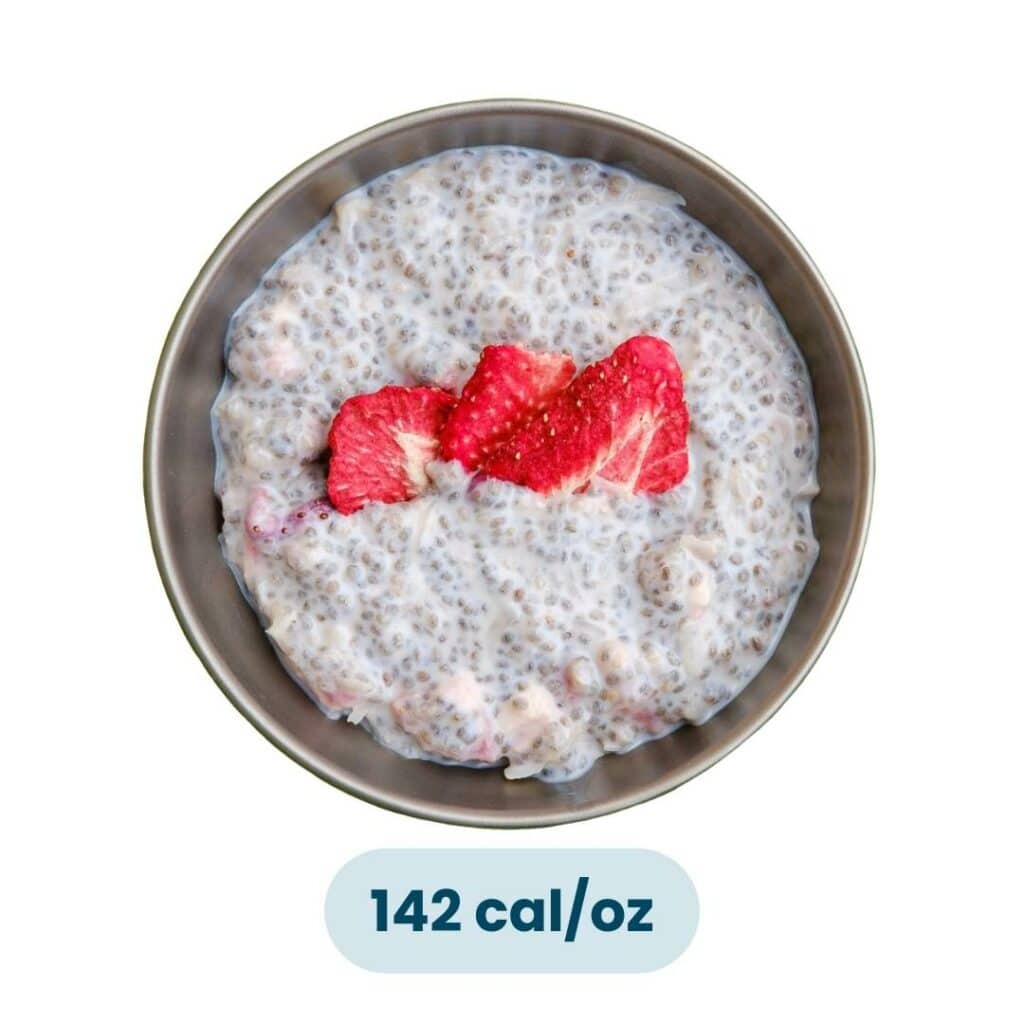

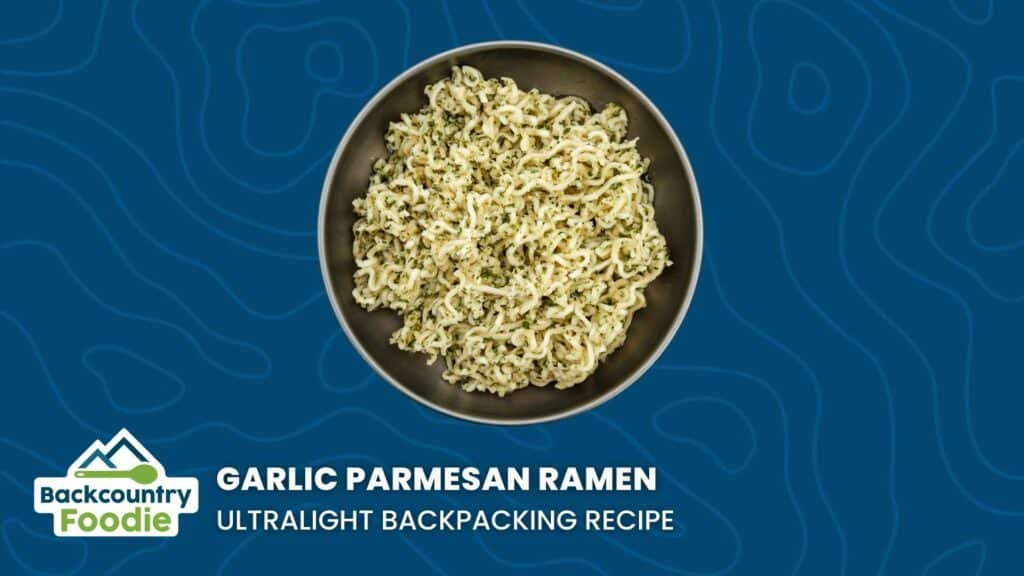



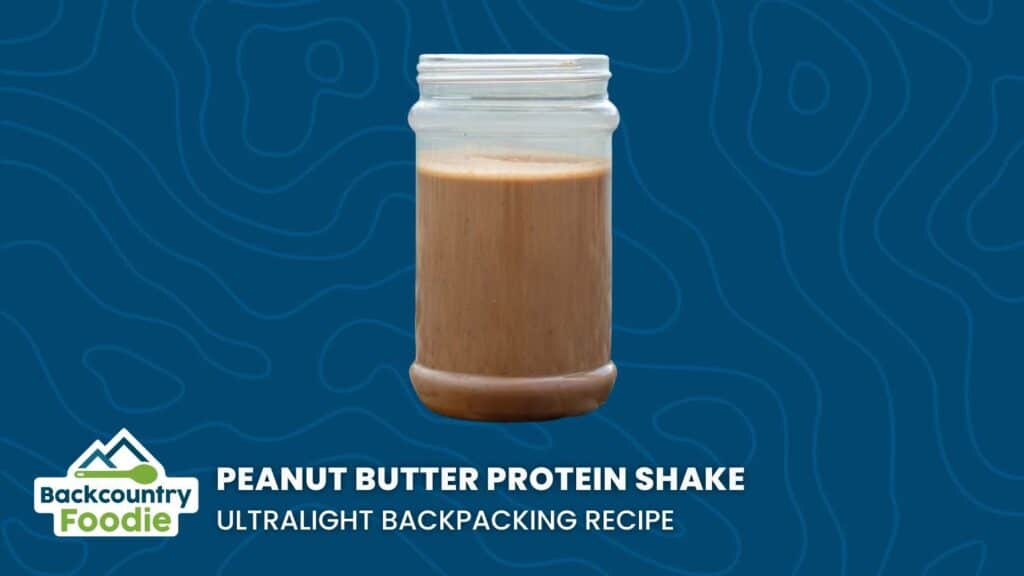
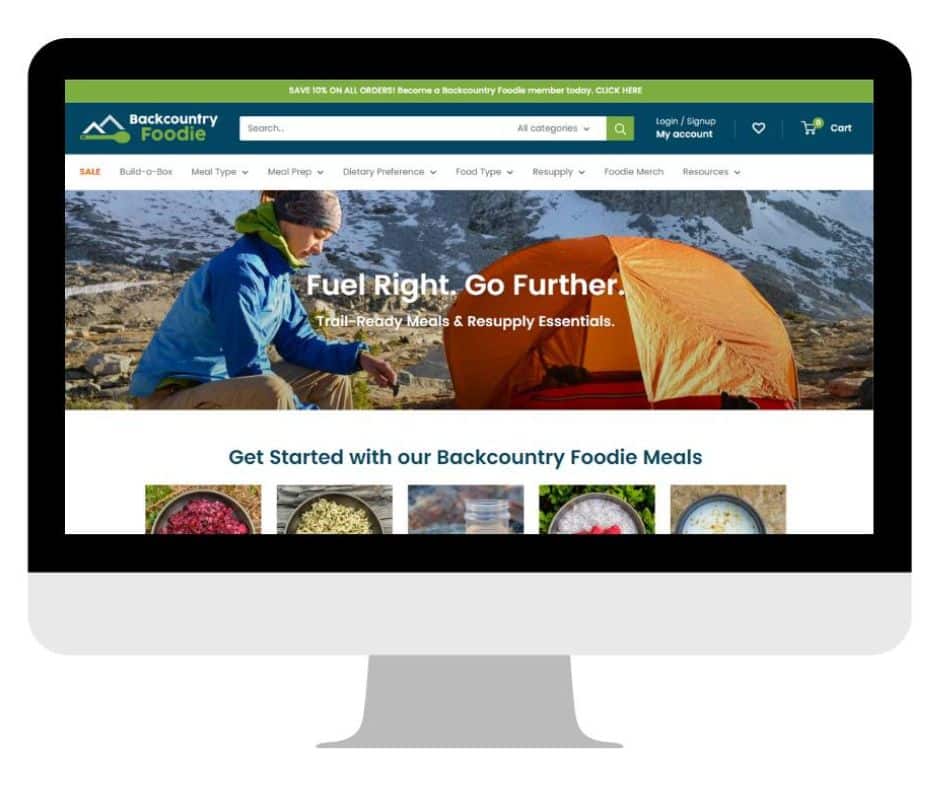
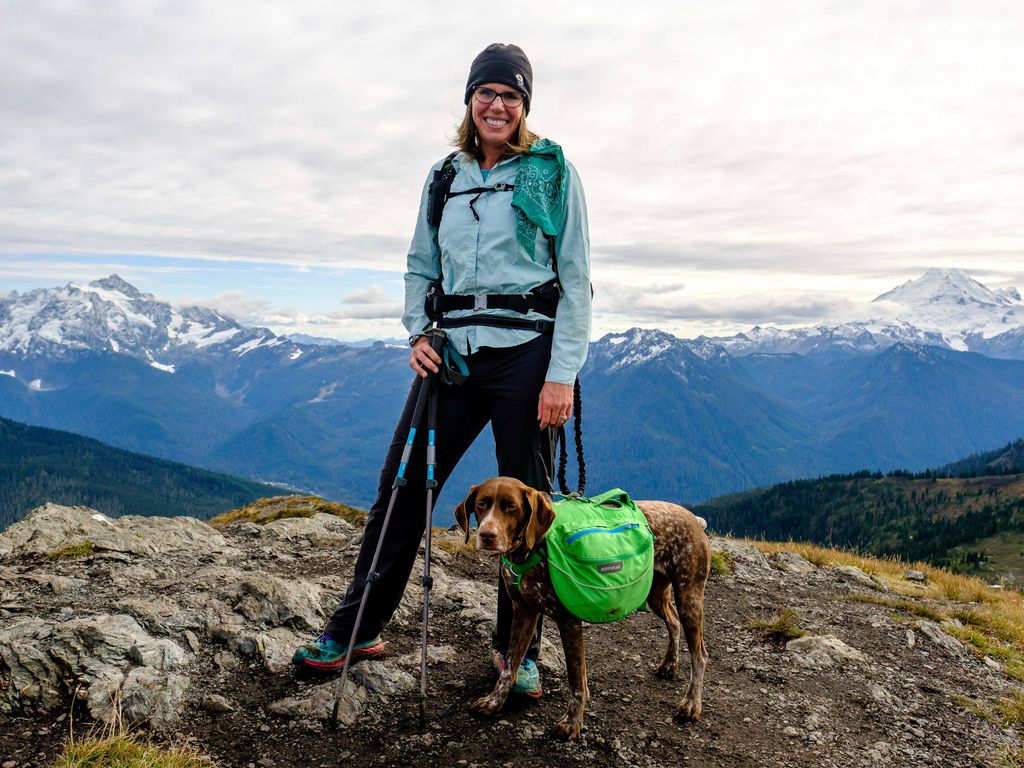

7 Comments
Does anyone know if Barilla or Banza Chick Pea/Lentil pasta is suitable for cold soaking? I’m also curious as to whether or not anyone has tried RightRice?
I cold soaked RightRice today! I used Backcountry Foodie’s cashew curry couscous recipe but substituted RightRice for the couscous and skipped the EVOO. I soaked for about 2 hours (don’t know if it needed that long, but that’s just how it worked out) The texture and taste were great! I will definitely do this again.
Great article. Not sure what my plans are yet. But they will be in 2 more years. Thanks for the introduction to a different ideology.
Do you just rinse out the cold soak container? Won’t the little bit of food residue (left unless you use soap and scrub) start growing bacteria in the time between meals? This would concern me during the hot summer.
I carry a small eye dropper bottle with biodegradable soap. Add a few drops of soap and about an ounce of water to the cold soak jar. Close it up and let it “swish” itself clean while I’m hiking. When I need the jar again, it just needs a quick rinse, and it’s ready to use.
Hi Aaron, call me Zorro. I was disappointed to learn that boxed mac and cheese was not able to be cold soaked. Would you recommend that pre cooked and dehydrated pasta be cold soaked ,
and powdered cheese then be added, or do you have a better idea? PS. Great article.
Hi Zorro. Apologies for the delayed response. I was finally able to test the mac and cheese powder with a cold soak meal. To my surprise, the powder rehydrates easily with cold water. Yes, I would rehydrate the precooked pasta, discard any excess water and then add the cheese powder if preparing as a cold soak meal.